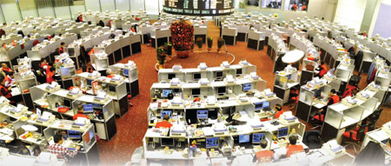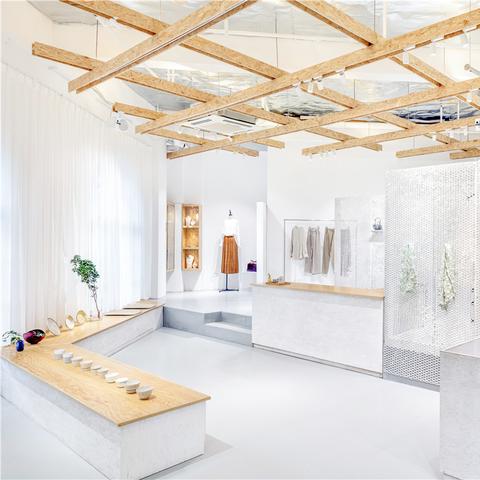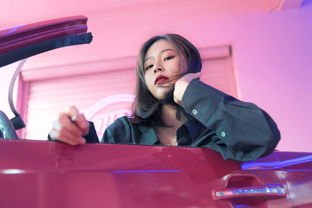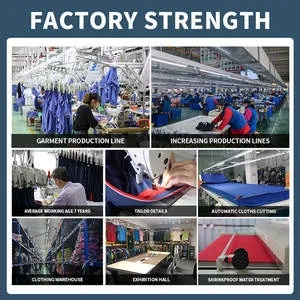The Art of Fabric Shop Design:A Comprehensive Guide
"The Art of Fabric Shop Design: A Comprehensive Guide" is a comprehensive guide that provides essential tips and techniques for creating a visually appealing and functional fabric shop. From understanding the importance of color, texture, and pattern to mastering design elements like layout, lighting, and storage, this guide covers all the essential aspects of fabric shop design. It also includes case studies and real-world examples of successful shop designs to inspire and inform the reader. With its easy-to-follow step-by-step instructions and practical advice, "The Art of Fabric Shop Design" is an invaluable resource for anyone who wants to create a beautiful and functional fabric store.
Introduction: When it comes to crafting the visual appeal of your textile store, a carefully thought-out design strategy can make all the difference. Whether you're looking to attract customers with bold colors and patterns or maintain a classic, sophisticated aesthetic, this guide will provide essential tips and techniques for designing a standout store that showcases your brand's personality. Let us delve into the world of textile shop design and explore how to create an inviting environment that not only sells fabric but also tells a story.

Shop Display Strategies:
Layout Planning: The layout of your store plays a crucial role in its success. It needs to be designed to maximize foot traffic and encourage customers to browse. A well-planned display can help to highlight your most popular items and draw attention to new arrivals.
| Layout | Description |
|---|---|
| Centralized Display | Place key items at the center of your store, allowing customers to easily see what is available. |
| Vertical Display | Use shelving or hanging rods to display fabric vertically, creating a sense of height and depth. |
| Wide Shot Displays | Allow customers to see the entire width of fabrics on display. |
| Close-Up Views | Showcase smaller items or intricate details, enhancing their appeal. |
Color Psychology: Color plays a significant role in evoking emotions and driving customer behavior. Selecting colors that align with your brand identity can enhance the overall shopping experience.
| Colors | Description |
|---|---|
| Neutral Colors | Bright white or off-white background, black, gray, or brown tones can create a calming and professional look. |
| Warm Tones | Softer hues like red, orange, and yellow bring warmth and energy to your display. |
| Cool Tones | Blues, greens, and violets offer a serene atmosphere and can be used to emphasize luxury or high-end products. |
Texture and Patterns: Adding texture to your displays can make them more interesting and visually appealing. Using contrasting patterns can add depth and intrigue to your space.
| Texture | Pattern |
|---|---|
| Wool, Cotton, Silk | Floral, geometric, or abstract patterns can add a pop of color and interest. |
| Leather | Plaids, zigzags or stripes can mimic textured materials and create an eclectic feel. |
| Linens | Layered patterns or subtle prints can create a sense of depth and complexity. |
Accessories: Accompaniments like shelves, hooks, stands can significantly impact the overall presentation of your fabrics. Choose accessories that match the style and purpose of your display area.
| Accessories | Description |
|---|---|
| Shelf Stands | Utilize tall shelves or tiered stands to showcase larger pieces. |
| Hooks & Racks | Attach hooks to walls for hanging fabrics, while racks can hold bulky items. |
| Tables & Chairs | Accompany your fabrics with sturdy tables and chairs for browsing comfort. |
Lighting: Lighting is an integral part of creating a warm and inviting atmosphere. Natural lighting should always be considered, but if necessary artificial lighting should be strategically used to highlight fabric textures and colors.
| Lighting | Description |
|---|---|
| Natural Light | Open windows and use large windows to allow ample natural light. |
| Artificial Lighting | LED strip lights, softbox spotlights, or even table lamps can be utilized to illuminate specific areas of your displays. |
Interior Design: Interior design elements such as mirrors, rugs, and artwork can greatly impact the mood and atmosphere of your space. They should complement your fabrics and reflect your brand's personality.
| Interior Design | Description |
|---|---|
| Mirrors | Large mirrors placed strategically can create the illusion of more space and increase visual impact. |
| Rugs | Area rugs with neutral tones can add coziness and warmth to the space. |
| Artwork | Hanging art can add character and personalization to your display area. Consider commissioning custom pieces or finding artwork that aligns with your theme. |
Sample Displays: Sample displays are a great way to showcase your latest collections or introduce new fabrics. They should be eye-catching and engaging, encouraging customers to touch and feel the fabric firsthand.
| Sample Displays | Description |
|---|---|
| Front Row Displays | Place the most popular fabrics or items on the front row for immediate visibility. |
| Back Room Collections | Offer samples of more niche or unique fabrics for potential customers who may not have been able to see them in the main display. |
| Behind-the-Scenes Look | Include behind-the-scenes information about fabric selection, production process, or any special features that set your fabric apart. |
Technology Integration: Technology has revolutionized how we interact with textiles, so consider incorporating digital displays, touch screens, or virtual reality experiences where possible. This can provide an interactive and immersive shopping experience for customers.
| Technology Integration | Description |
|---|---|
| Digital Displays | Implement QR codes on your fabric displays that lead customers to online product pages. |
| Virtual Reality Experiences | Create VR experiences that allow customers to "try on" different fabrics in their home. |
| Interactive Touchscreens | Use touch screens for quick browsing, product search, or ordering capabilities. |
Customer Feedback: Collecting and using feedback from customers is crucial in improving future designs. Regular surveys, focus groups, or social media engagements can provide insights on what works well and what could be improved.
| Customer Feedback | Description |
|---|---|
| Surveys & Questionnaires | Providing customers with surveys or questionnaires allows you to understand their preferences and needs better. |
| Focus Groups | Engaging in focus group discussions can uncover valuable customer perspectives and opinions. |
| Social Media Engagement | Posting images and stories about your fabrics and store can generate buzz and engage your target audience. |
Store Management and Maintenance: Maintaining the cleanliness, organization, and functionality of your store is crucial for a positive shopping experience. Keeping track of inventory levels, cleaning regularly, and ensuring proper storage of fabrics are all important aspects of store management.
Conclusion: Creating a successful textile store requires careful planning and thoughtful execution. By utilizing a variety of display strategies, selecting appropriate colors, textures, and patterns, integrating technology, and actively soliciting customer feedback, your textile store can become a hub for inspiration and purchase decisions. Remember, the goal is to not just showcase your fabrics but also tell a story that resonates with your customers.
随着时尚潮流的不断演变,纺织品店铺的设计也日益受到重视,本篇内容将围绕纺织品店铺设计主题,结合实际案例,为您呈现一篇英文口语化内容。
纺织品店铺设计要素
店铺布局规划
店铺布局应考虑顾客的购物体验和便利性,纺织品店铺应设有展示区、试衣间、购物车存放区等,应确保店铺空间宽敞、明亮,便于顾客浏览和选购。
材质选择与展示

材质是店铺设计的重要组成部分,店铺应选择高质量、环保、可持续的材料,展示不同材质的纺织品,如棉、麻、丝绸、涤纶等,店铺应定期更新材料展示,保持新鲜感。
色彩搭配与主题风格
色彩搭配是店铺设计中的重要元素,店铺应根据季节、节日、品牌特色等选择合适的色彩,营造出独特的氛围和风格,店铺应注重主题风格的设计,突出品牌特色和店铺文化。
装饰与照明
装饰和照明是店铺设计中不可或缺的部分,店铺应使用高质量的装饰材料,营造出温馨、舒适的购物环境,店铺的照明应明亮、柔和,确保顾客在选购过程中能够清晰地看到商品细节。
案例分析
以下是关于纺织品店铺设计的英文案例说明:
时尚纺织品店设计
该店铺位于市中心繁华地段,布局宽敞明亮,设有多个展示区,包括各种材质的纺织品展示区、试衣间等,店铺色彩搭配以暖色调为主,营造出温馨舒适的购物环境,店铺装饰以简约现代风格为主,使用高质量的装饰材料,营造出高品质的购物体验,店铺还定期更新材料展示,保持新鲜感。
环保纺织品店设计
该店铺注重环保理念,选择高质量、环保、可持续的材料进行展示,店铺布局宽敞明亮,设有多个区域用于展示不同材质的纺织品,店铺色彩搭配以绿色为主,营造出环保、健康的购物氛围,店铺装饰以绿色元素为主,使用环保材料和植物装饰,营造出自然、清新的购物环境,店铺还注重品牌文化的展示,突出品牌特色和店铺文化。
设计建议
针对纺织品店铺设计,以下是一些设计建议:
-
注重材质选择与展示:在设计中应注重材质的选择和展示,让顾客能够直观地了解不同材质的纺织品的特点和适用场景。
-
色彩搭配与主题风格:在设计中应注重色彩搭配与主题风格的设计,突出品牌特色和店铺文化,应根据季节、节日等变化进行色彩搭配和主题风格的更新。
-
注重装饰与照明:在设计中应注重装饰和照明的设计,营造出温馨、舒适的购物环境,应根据顾客的需求和习惯进行照明设计,确保顾客在选购过程中能够清晰地看到商品细节。
纺织品店铺设计是时尚行业的重要组成部分,在设计过程中,应注重布局规划、材质选择与展示、色彩搭配与主题风格、装饰与照明等方面,应根据实际情况进行案例分析和设计建议的应用,通过精心设计的纺织品店铺设计,可以吸引更多的顾客前来选购高质量的纺织品,提高店铺的销售额和品牌影响力。
Articles related to the knowledge points of this article:
Understanding Color in Textiles:A Comprehensive Guide
The Innovation and Growth of Qingdao Shenglong Textiles
The Art of Textile Dyeing A Comprehensive Guide
Summary of the Textile Exhibition
The Current Rates and Policies for Chinese Imported Textiles



